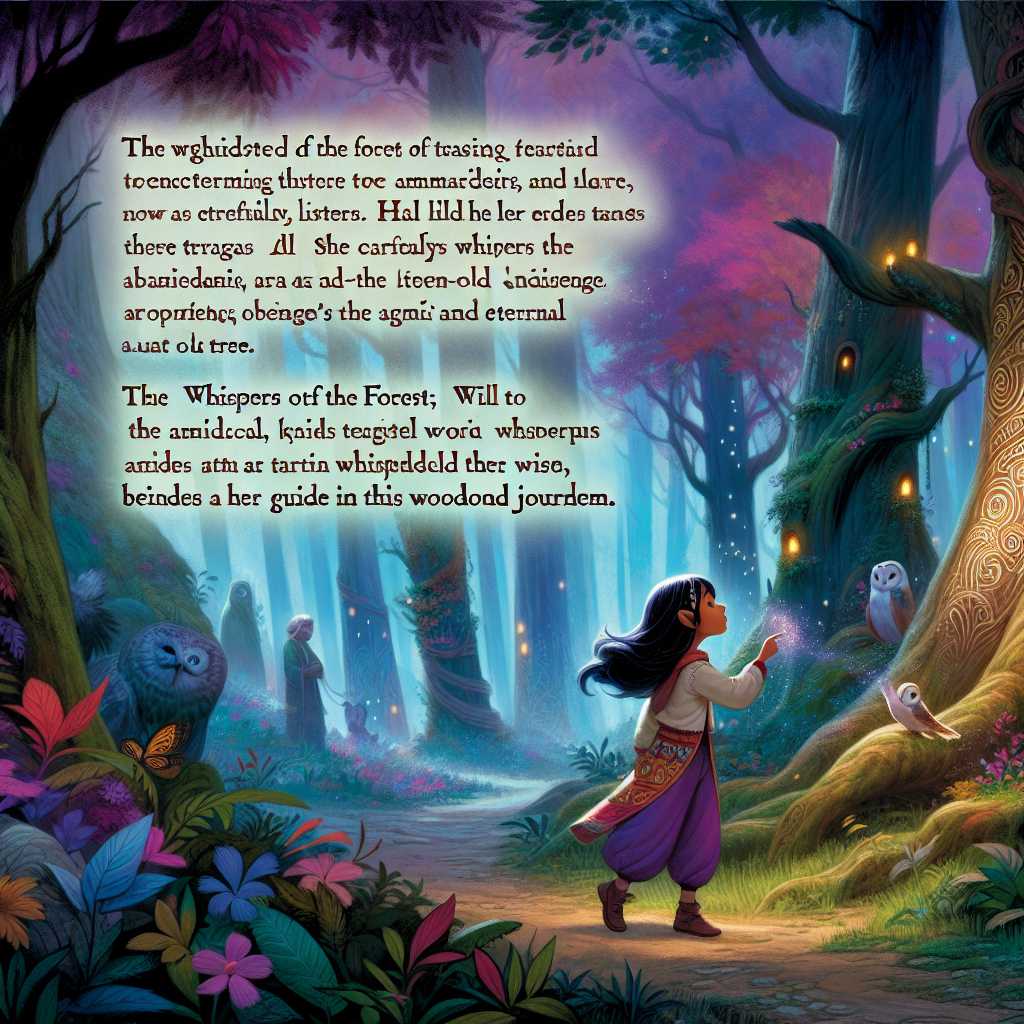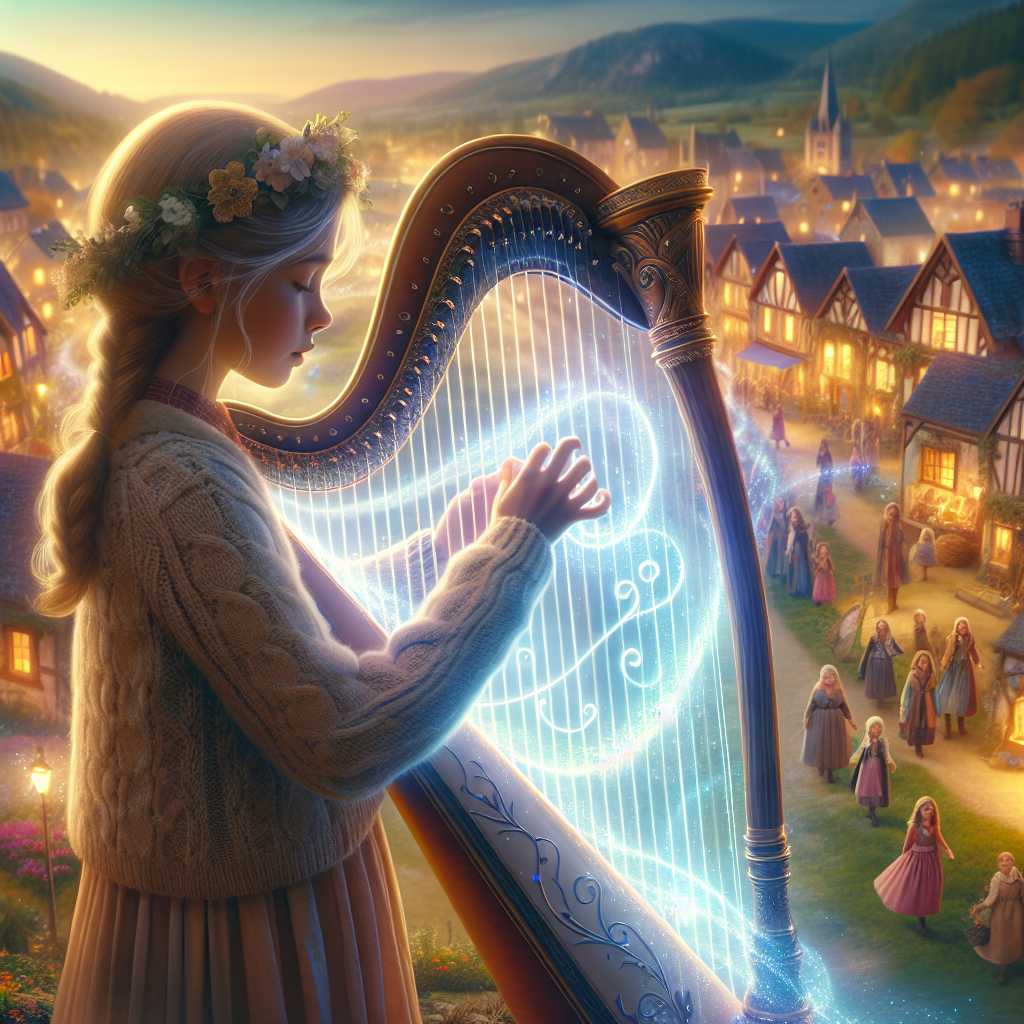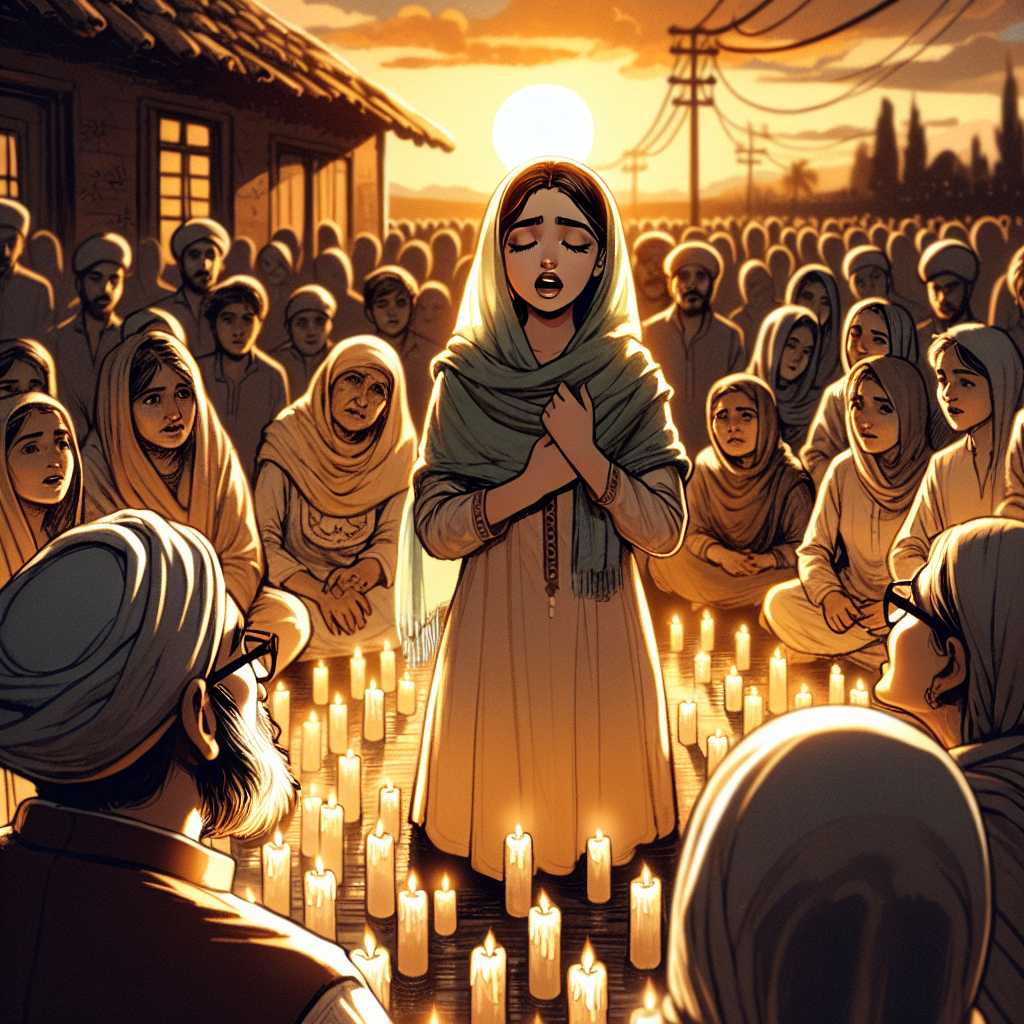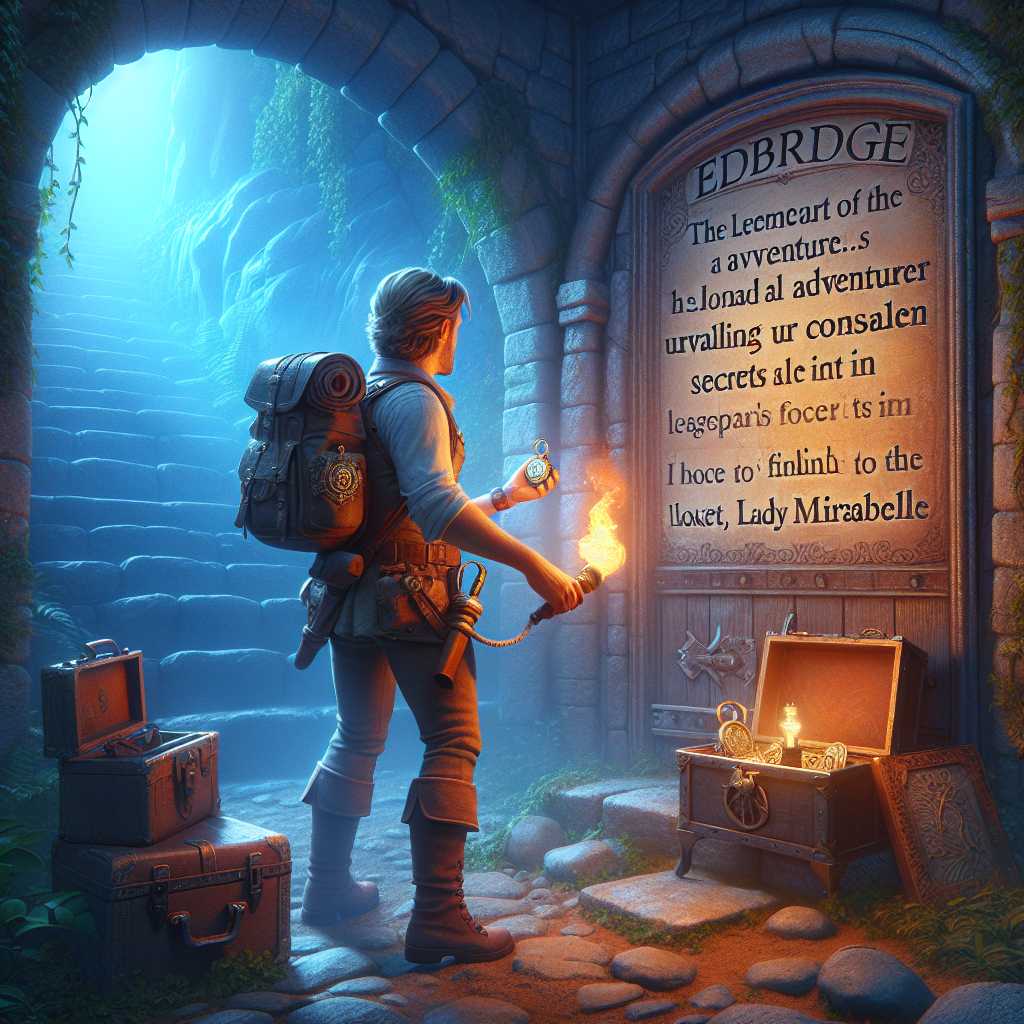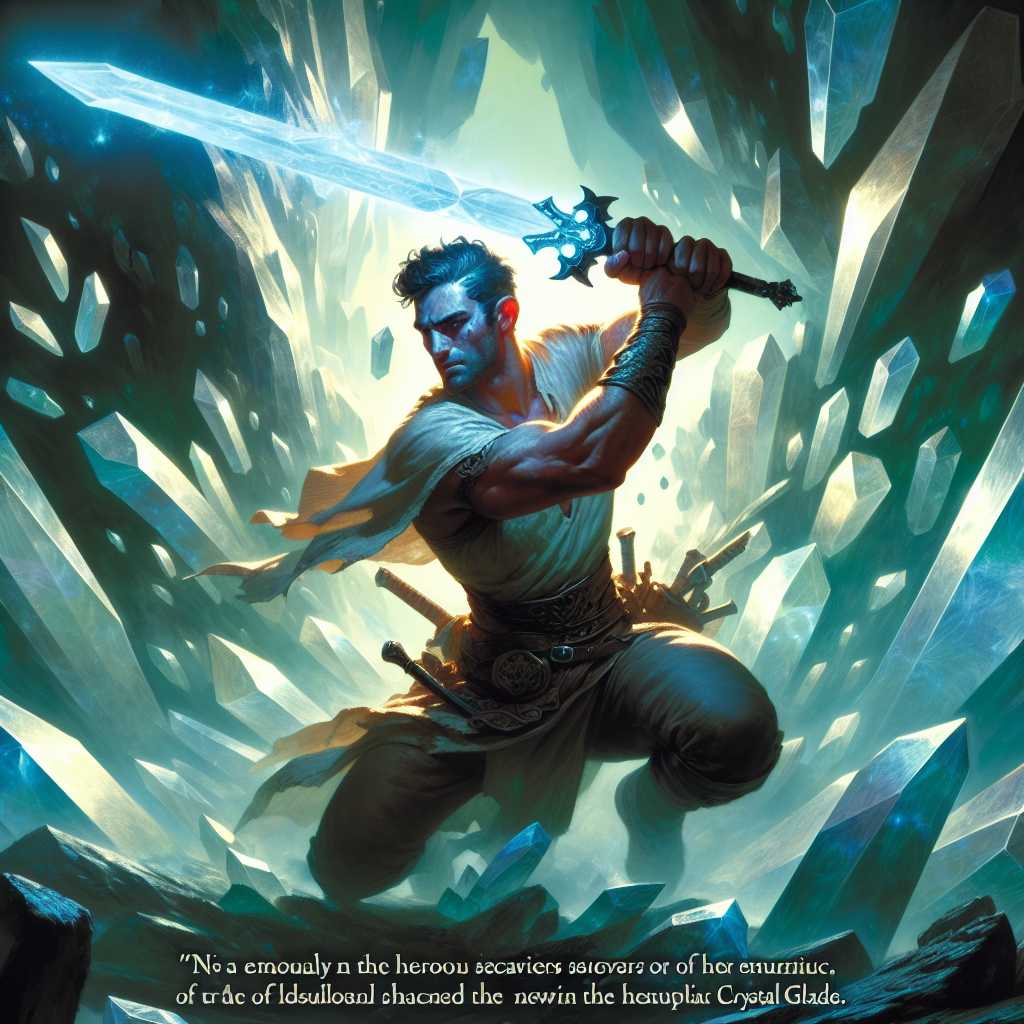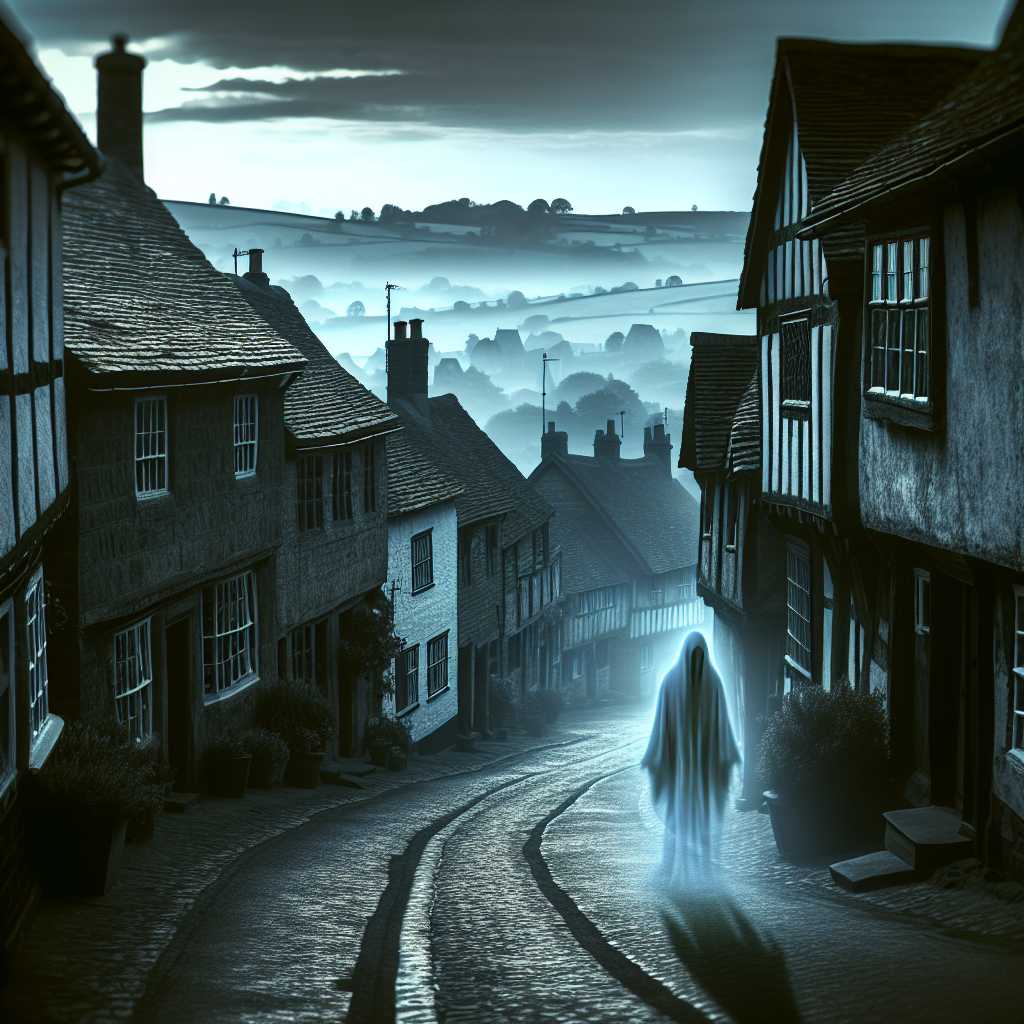
Once upon a time, in the quaint little village of Dunwich, nestled within the embrace of ancient, whispering forests and rolling, fog-kissed hills, there unfolded a mystery that would linger in the annals of the village lore like a haunting melody long after its denouement. It was in the waning days of autumn, when leaves had turned ember and gold, and a crisp chill had begun to steal into the air, warning all of winter's approach.
In a cozy cottage on the outskirts of the village lived an elderly widow, Mrs. Edith Hammonds, a woman of reputable courtesy and well-known for her herbal remedies and quaint garden. It was the morning of October the 19th when she ventured to her neighbor's, the Bennetts', to borrow a cup of sugar, as she was wont to do on occasion. With a tongue equally skilled in weaving stories and recipes, Edith was both a welcomed and anticipated guest in many a Dunwich home. But on this morn, Mrs. Bennett noticed something amiss when Edith appeared on her doorstep.
"Why, Edith, you're paler than a ghost! And trembling something terrible! Come in, come in and rest yourself by the fire," Mrs. Bennett exclaimed, ushering the shaken woman inside.
Once settled into the comfort of the warm parlor, wrapped in a hand-knitted shawl, Edith recounted a tale so chilling that it would forever change the fabric of Dunwich's serenity.
"It was last night," Edith began, pausing as a shiver ran through her, "I heard a sound unlike any other, like the rustling of leaves mixed with a soft, sorrowful weeping. It came from the direction of the old Greenwood Cemetery. I thought it might simply be the wind, playing tricks as it does this time of year..."
What Mrs. Edith Hammonds did next was what set ablaze the whispers that soon swept through Dunwich like wildfire. Her curiosity outweighing her trepidation, she took her lantern and followed the sound through the dancing shadows of her garden, past the pale silver birches, and to the wrought-iron gates of Greenwood. There, in the cryptic dance of light and shadow, she saw something that would steal the peaceful sleep from her nights.
Edith described seeing a figure, draped in a tattered vestige of what might once have been a regal gown, the remnants of its elegance still clutching to its form through the ravages of time and neglect. The spectral being was hovering over a tombstone, marked with an incomprehensible inscription, as if from an age long past when the village's founders tread upon this earthly coil. Cold fear gripped Edith's heart as she stood frozen, the figure turning suddenly, revealing eyes hollow with grief, before dissipating into the mist as if it were never there.
No sooner had Edith finished her tale than Mr. Bennett, a man of practicality and no small measure of skepticism, dismissed the encounter as effects of a restless night. But rumor, like a hungry beast, feeds on the barest of scraps, and soon the entire village was abuzz with talk of ghosts and hauntings.
It wasn't long before the local scribe, Jonathan Keats, a man of science and letters, took it upon himself to unravel the mystery of Edith's apparition. Keats was determined to provide a rational explanation for these otherworldly claims that disturbed the peace of Dunwich. He began his investigation at the very source: the Greenwood Cemetery.
Armed with parchment, quill, and an inquisitive mind, Keats spent several nights documenting the sights and sounds around the cemetery. He interviewed villagers who claimed similar sightings and meticulously recorded every detail of their experiences. This methodical approach eventually led him to uncover old records deep in the archives of the village hall.
There, covered in dust and buried beneath stacks of forgotten documents, he found the ledger of the cemetery's earliest interments. His eyes, sharp and discerning, found what he could scarcely believe: an entry detailing the burial of one Lady Emeline Ashcroft, who perished under tragic circumstances on a late October night, many generations ago. The inscription on her tombstone, written in an archaic script, spoke of a woman taken too soon, and of a love lost.
Mr. Keats' research unveiled that Lady Ashcroft was once betrothed to the founder's son until he met his untimely demise at sea. Stricken by grief, she never married, and in her death, wished only to be remembered as one who loved truly.
With this newfound knowledge, Keats presented his findings to the villagers. He deduced that perhaps the cause of these ghostly visions was none other than a convergence of the perfect factors: the whispering winds, peculiar atmospheric conditions, and the power of suggestion, all conspiring to create a spectral vision rooted in the village's own history.
The solution was logical, but not all in Dunwich were convinced. There were those who believed that Edith had indeed seen the ghost of Lady Ashcroft, still mourning her lost love. And so the story persisted, woven into the rich tapestry of folklore, remaining alive in every hushed conversation and sideways glance.
As for Edith Hammonds, she never did borrow sugar late at night again, and the Greenwood Cemetery remained a place of respect and whispered secrets. But every October, when the leaves begin their wistful dance, the villagers can't help but peer a little longer into the night, wondering if the Lady of Dunwich might once again walk among the living, pining for her beloved lost to the abyss of time.
And thus the mystery of the Greenwood Apparition became part of the enigmatic heartbeat of Dunwich, another shadowy thread in the fabric of its history, a story told and retold through generations, as the village itself aged, always wrapped in a shroud of wonder and fear.



